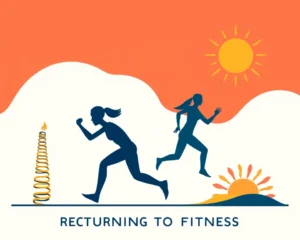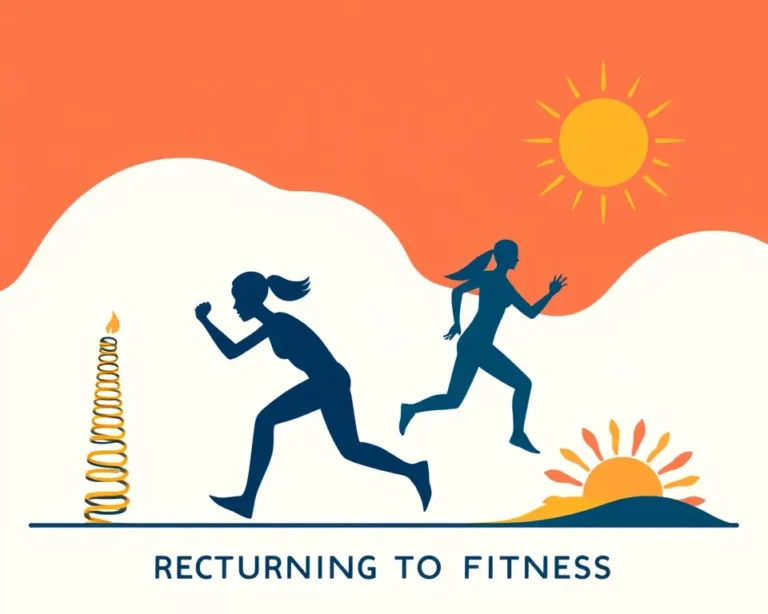Taking a break from your fitness routine happens. Life gets busy, injuries occur, and motivation wanes. But don’t worry; it’s definitely possible to get back into working out, even after a long hiatus. This guide provides expert-backed advice on exercises to ease you back into fitness safely and effectively.
Understanding Your Body After a Break
Detraining Effects
A period of inactivity leads to detraining, where your body loses some of the adaptations gained through exercise. Expect decreases in:
- Muscle mass: Muscle atrophy begins relatively quickly, especially with complete inactivity.
- Strength: You won’t be able to lift as much as you did before.
- Endurance: Your cardiovascular fitness will decline, making it harder to perform cardio exercises.
- Flexibility: Joints and muscles may feel stiffer.
Importance of a Gradual Return
Jumping back into your old routine with the same intensity and volume is a recipe for injury and burnout. A gradual approach is crucial to allow your body to readapt and rebuild its fitness base.
Key Principles for Restarting Your Workout Routine
1. Start Slow and Steady
- Low Intensity: Begin with low-intensity exercises that are easy on your body.
- Short Duration: Keep your initial workouts short, even just 10-15 minutes.
- Gradual Progression: Gradually increase the duration, intensity, and frequency of your workouts as your body adapts.
2. Listen to Your Body
- Pay Attention to Pain: Stop if you experience any sharp or persistent pain. Discomfort and muscle soreness are normal, but pain is a warning sign.
- Rest and Recovery: Schedule rest days to allow your muscles to recover and rebuild. Aim for 7-8 hours of sleep each night.
- Don’t Overdo It: Avoid overexertion, which can lead to injury and setbacks.
3. Focus on Proper Form
- Technique Over Weight: Prioritize correct form over lifting heavy weights.
- Controlled Movements: Perform exercises with slow, controlled movements to engage the correct muscles and prevent injury.
- Consider a Trainer: If you’re unsure about proper form, work with a qualified personal trainer.
4. Choose Enjoyable Activities
- Find What You Like: Pick exercises you find enjoyable to increase adherence and motivation.
- Variety is Key: Mix up your workouts to prevent boredom and challenge different muscle groups.
- Make it Fun: Add a playful or social element to your fitness routine.
5. Set Realistic Goals
- Achievable Milestones: Break down long-term goals into smaller, achievable milestones.
- Focus on Consistency: Aim for consistency over intensity, even if it’s just showing up for 10 minutes a day.
- Celebrate Progress: Reward yourself for small wins to stay motivated.
6. Warm-up and Cool-down
- Prepare Your Body: A proper warm-up prepares your muscles for exercise.
- Aid Recovery: Post-exercise stretching aids recovery and reduces muscle soreness.
- Include Mobility Work: Incorporate dynamic stretches and mobility exercises to improve flexibility and range of motion.
7. Stay Hydrated and Nourished
- Drink Water: Drink water before, during, and after exercise.
- Healthy Diet: Fuel your workouts with a balanced diet of fruits, vegetables, lean proteins, and whole grains.
Recommended Exercises for Starting After a Long Break
Here’s a breakdown of exercises suitable for beginners returning to fitness, categorized by type:
1. Cardio
Cardio exercises improve cardiovascular health, burn calories, and help you get back into a routine.
- Walking: One of the simplest and most effective ways to get moving again. Start with short walks and gradually increase the duration and pace.
- Swimming: A low-impact cardiovascular exercise that’s gentle on the joints.
- Cycling: Another low-impact option that’s easy to scale.
- Elliptical Trainer: Provides a full-body workout with minimal impact.
- Aqua Jogging: Particularly good after leg or foot injuries.
Sample Cardio Workout:
- Warm-up: 5-minute walk at a slow pace.
- Workout: 20-minute brisk walk, gradually increasing your pace.
- Cool-down: 5-minute walk at a slow pace.
2. Strength Training
Strength training builds muscle mass, strengthens joints, and boosts metabolism. Start with bodyweight exercises and light resistance.
- Bodyweight Exercises:
- Squats: A fundamental exercise that works the legs and glutes.
- Lunges: Improve balance and strengthen the legs and glutes.
- Push-ups: Work the chest, shoulders, and triceps. Start with assisted push-ups against a wall or on your knees.
- Plank: Strengthens the core muscles.
- Step-ups: Using a bench or step.
- Bicycle Crunches:
- Tricep Dips: Using a bench or chair
- Side Plank:
- Resistance Bands: A versatile and low-impact way to build strength.
- Resistance Band Rows: Work the back muscles.
- Resistance Band Curls: Strengthen the biceps.
- Banded Bridge:
- Lateral Band Walk:
- External Rotation:
- Reverse Fly:
- Light Weights:
- Dumbbell Rows: Work the back and biceps.
- Dumbbell Bench Press: Works the chest, shoulders, and triceps.
- Overhead Press: Works the shoulders and triceps.
Sample Strength Training Workout:
- Warm-up: 5 minutes of light cardio and dynamic stretches (arm circles, leg swings).
- Workout:
- Bodyweight Squats: 3 sets of 10-12 repetitions
- Assisted Push-ups: 3 sets of as many repetitions as possible (AMRAP)
- Plank: 3 sets, holding for 30 seconds
- Resistance Band Rows: 3 sets of 10-12 repetitions
- Cool-down: 5 minutes of static stretching, holding each stretch for 30 seconds.
3. Flexibility and Mobility
Flexibility and mobility exercises prepare your body for more strenuous activity and reduce injury risk.
- Dynamic Stretches:
- Arm Circles
- Leg Swings
- Torso Twists
- Static Stretches:
- Hamstring Stretch
- Quadriceps Stretch
- Calf Stretch
- Shoulder Stretch
- Yoga and Pilates: Gentle strength and flexibility exercises.
Sample Flexibility and Mobility Routine:
- Warm-up: 5 minutes of light cardio.
- Workout:
- Cat-Cow Stretch: 10 repetitions
- Child’s Pose: Hold for 30 seconds
- Downward-Facing Dog: Hold for 30 seconds
- Cobra Pose: Hold for 30 seconds
- Cool-down: 5 minutes of static stretching, holding each stretch for 30 seconds.
4. Active Recovery
Active recovery involves low-intensity exercise to promote blood flow and reduce muscle soreness.
- Light Walking: A gentle way to ease muscle soreness.
- Foam Rolling: Helps to release muscle tension and reduce DOMS.
- Stretching: Improves flexibility and reduces muscle stiffness.
- Yoga: Promotes relaxation and recovery.
Sample Active Recovery Workout:
- Warm-up: 5 minutes of light cardio, such as walking on a treadmill at a slow pace.
- Workout:
- Foam Rolling: 10 minutes, focusing on major muscle groups (legs, back, chest).
- Stretching: 10 minutes, holding each stretch for 30 seconds.
- Cool-down: 5 minutes of deep breathing and relaxation.
Sample Weekly Workout Schedule
Here’s a sample weekly schedule to guide your return to exercise:
- Monday: 15-minute cardio workout (walking, biking, or rowing).
- Tuesday: Rest or active recovery (10-minute yoga or Pilates).
- Wednesday: 10-minute strength-training session (bodyweight exercises or light weights).
- Thursday: Rest or active recovery.
- Friday: 15-minute cardio workout.
- Saturday: 10-minute strength session.
- Sunday: Rest or active recovery.
Maintaining Motivation
- Set Clear Goals: Break long-term aspirations into smaller, achievable milestones.
- Track Your Progress: Keeping a log of your workouts helps you stay motivated.
- Reward Achievements: Celebrate progress with treats like new gear, relaxation time, or favorite activities.
- Exercise with Others: Partner with friends or join group classes to combine fitness with social interaction.
- Incorporate Exercise into Daily Life: Link workouts with existing habits, such as walking after lunch or gym sessions after school drop-offs.
- Be Kind to Yourself: Acknowledge that setbacks happen and focus on the progress you’ve made.
Getting back into working out after a long break requires patience, consistency, and a smart approach. By following these guidelines and listening to your body, you can safely and effectively reignite your fitness journey and achieve your health goals.







